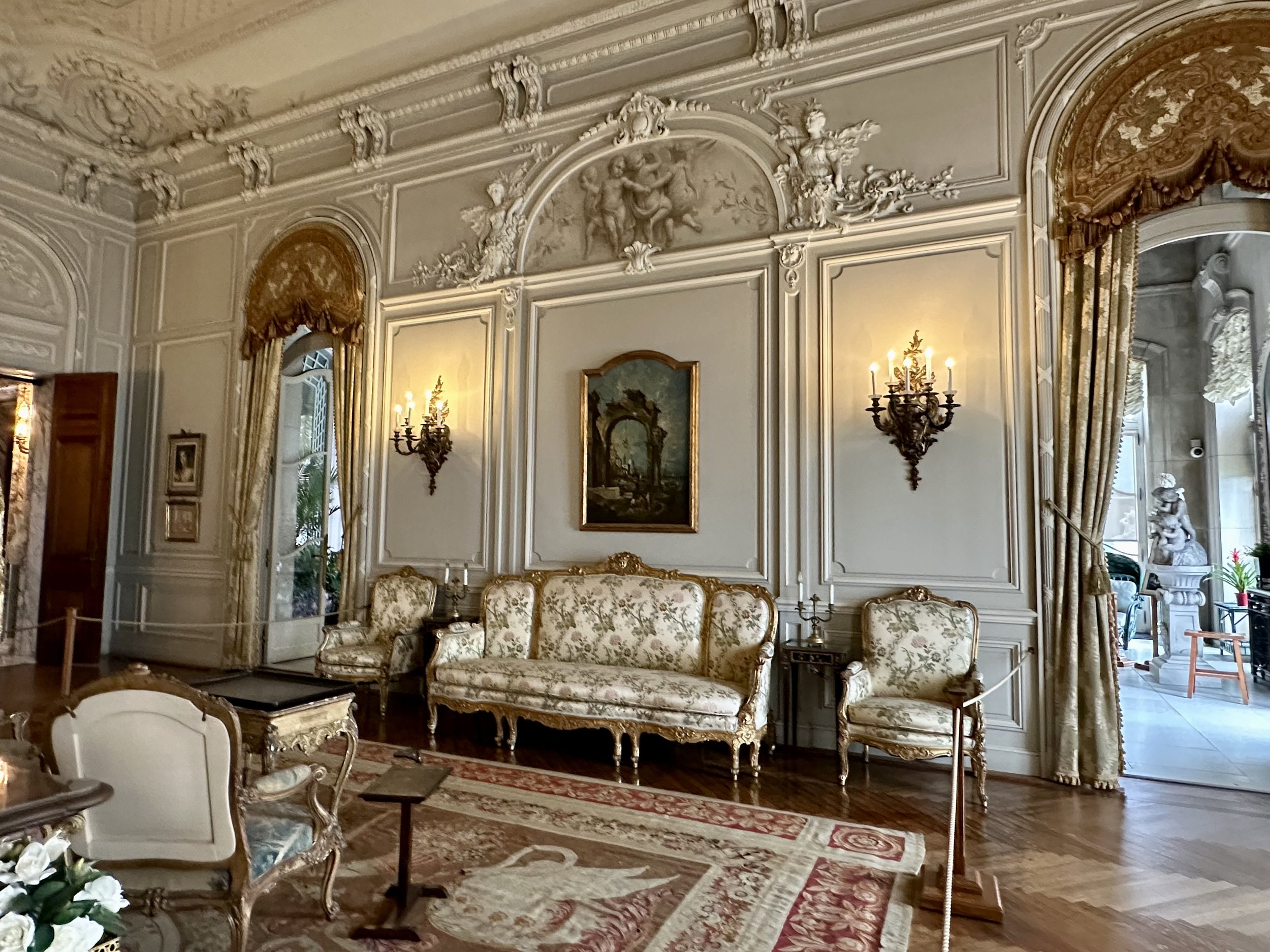Newport Mansions
Newport is famous for its “cottages” - the summer mansions of wealthy American high society families. They were built during the Gilded Age - about 1870 to 1910 - when Captains of Industry made huge fortunes very quickly, and there was no income tax. They flaunted their wealth with huge houses excessively decorated with expensive materials and European art. In the television series The Gilded Age, many of the houses were inspired by (or even filmed at) Newport Mansions.
To get the lay of the land, we took a tour in a distinctive white trolley. Our guide briefed us on Newport’s origins. It was founded in 1639 by people from Boston seeking freedom of worship, and soon became known for its religious diversity and tolerance. Ironically, in the 1700’s, Newport became the largest slave trade port in the continent. In the early 1800’s, badly damaged in the Revolutionary War, Newport re-invented itself as an artists’ colony and summer resort. Nearly surrounded by water, Newport had cooler summers, and in the late 1800’s, wealthy families from New York City began coming every year. They built expansive homes designed for lavish entertainment during the busy summer social season.
The Breakers
Perhaps the most famous of the Newport Mansions, The Breakers was built in 1895 by Mr. and Mrs. Cornelius Vanderbilt II. Cornelius was the favorite grandson of railroad and shipping magnate Commodore Cornelius Vanderbilt. Designed by Richard Morris Hunt, The Breakers resembles an Italian palazzo and looks out onto the Atlantic Ocean. Sadly, Cornelius enjoyed only one summer season in the Breakers; he suffered a debilitating stroke the following year.
To tour the Breakers, we paid an admission fee and then downloaded a self-guided audio tour to our mobile phones. It was a monstrous house, nearly 140,000 square feet, with 70 rooms on five floors! We saw about a dozen rooms on our tour, and the opulence was jaw-dropping. In the television show The Gilded Age, scenes in the Russell family’s New York house were filmed at The Breakers - the Billiard Room and the Music Room (which was used as their ballroom). Individual elements from The Breakers, such as the fireplaces and ornate columns, were re-created in sets for other scenes.
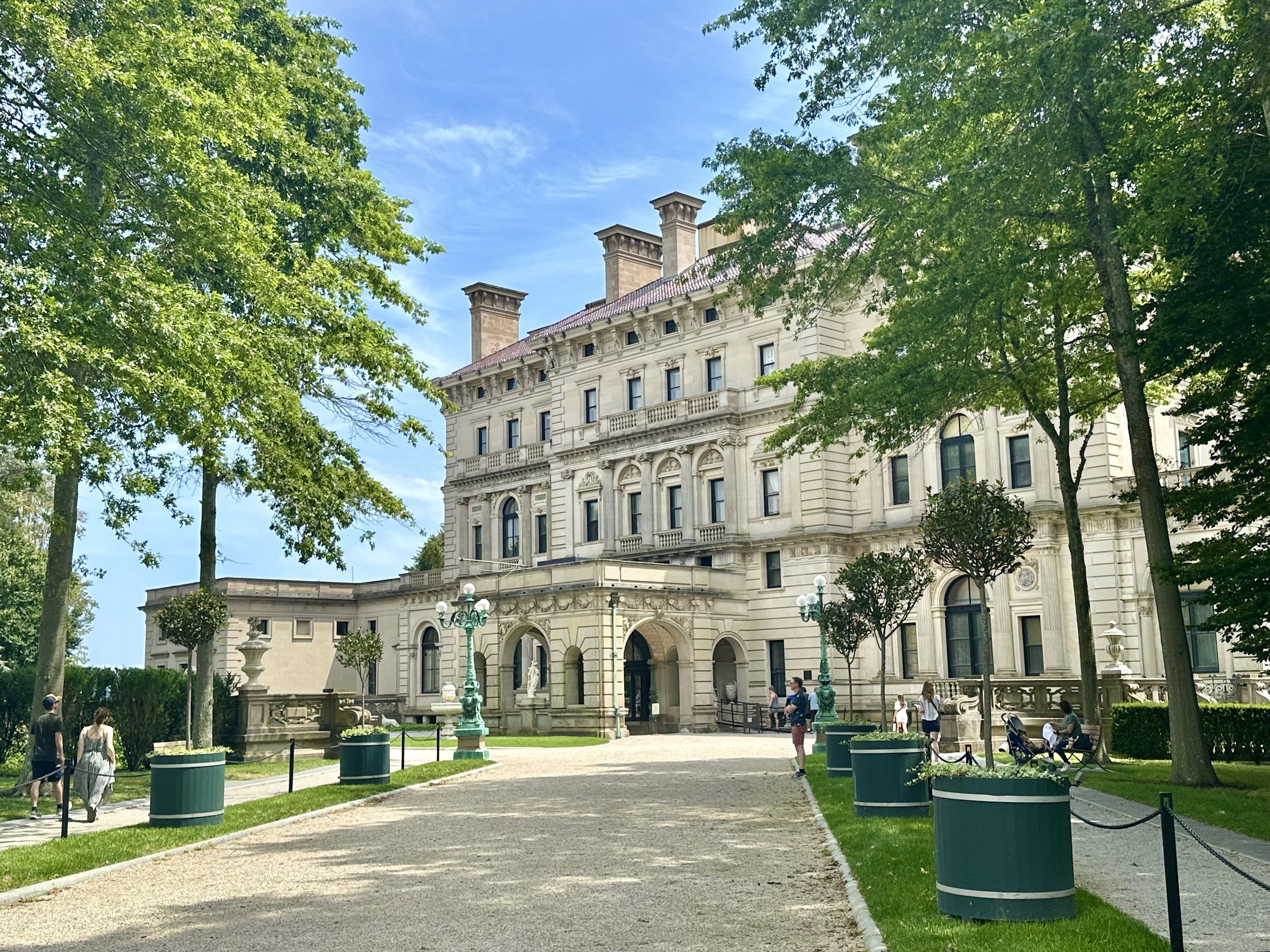
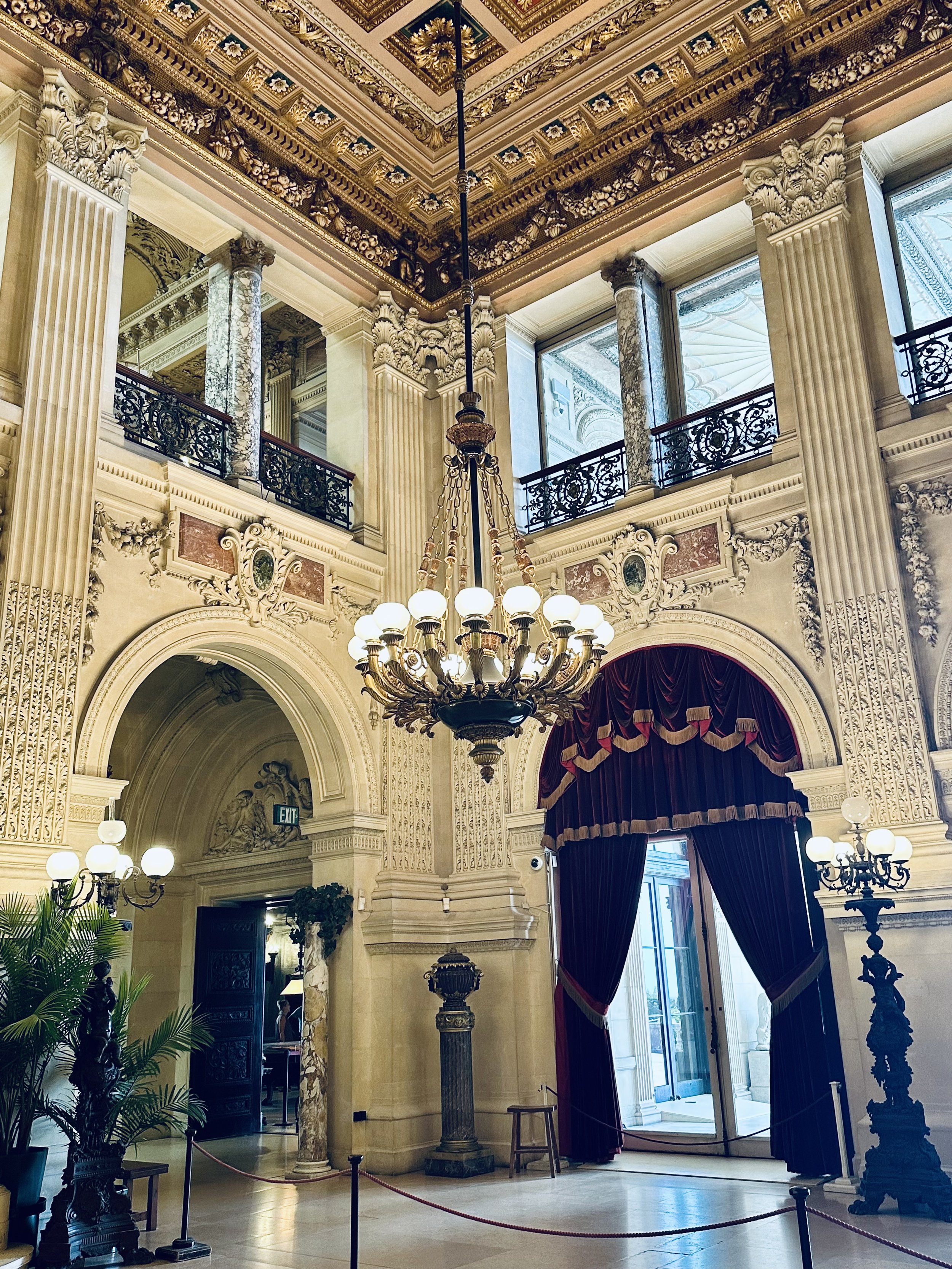
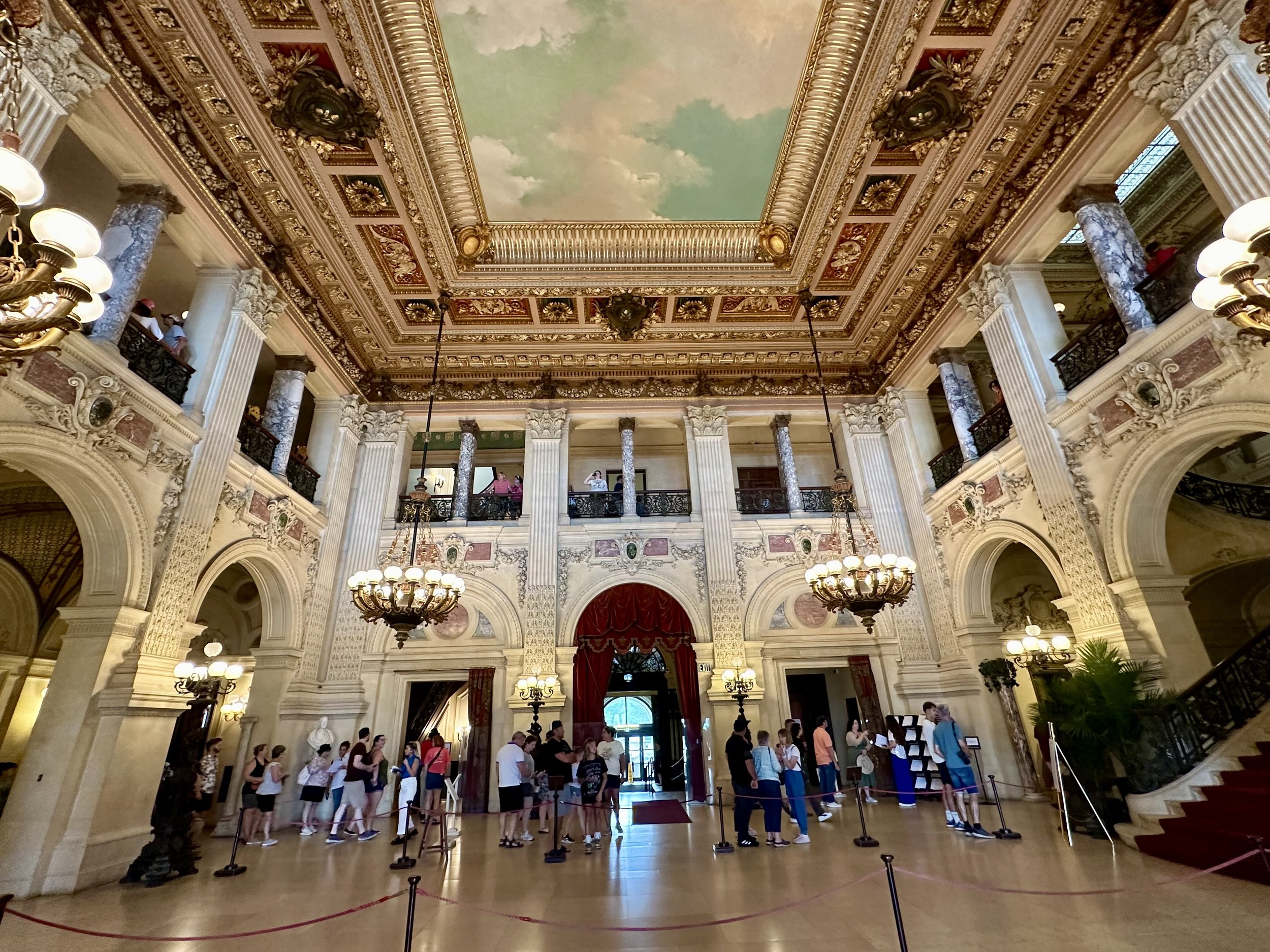

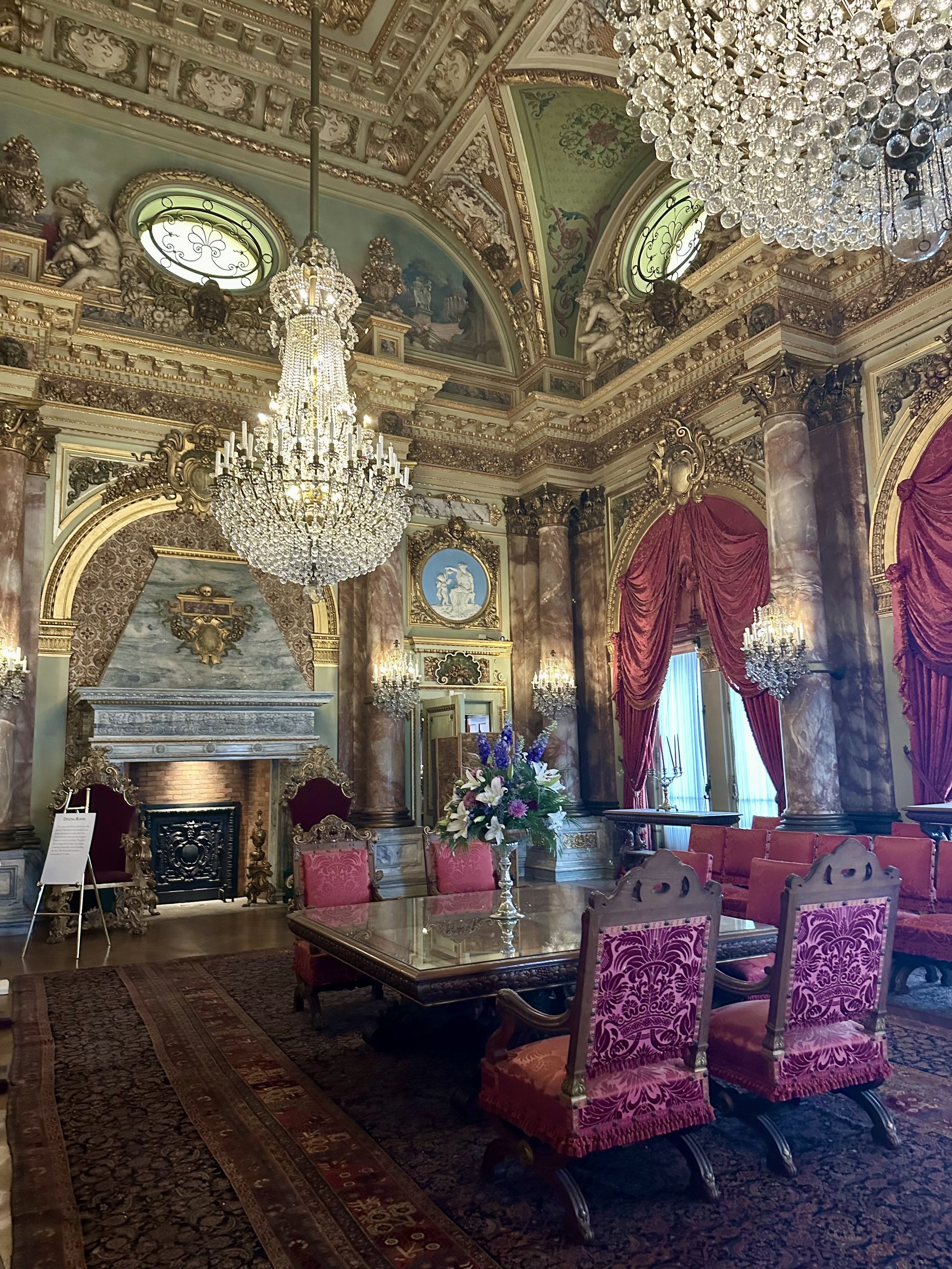
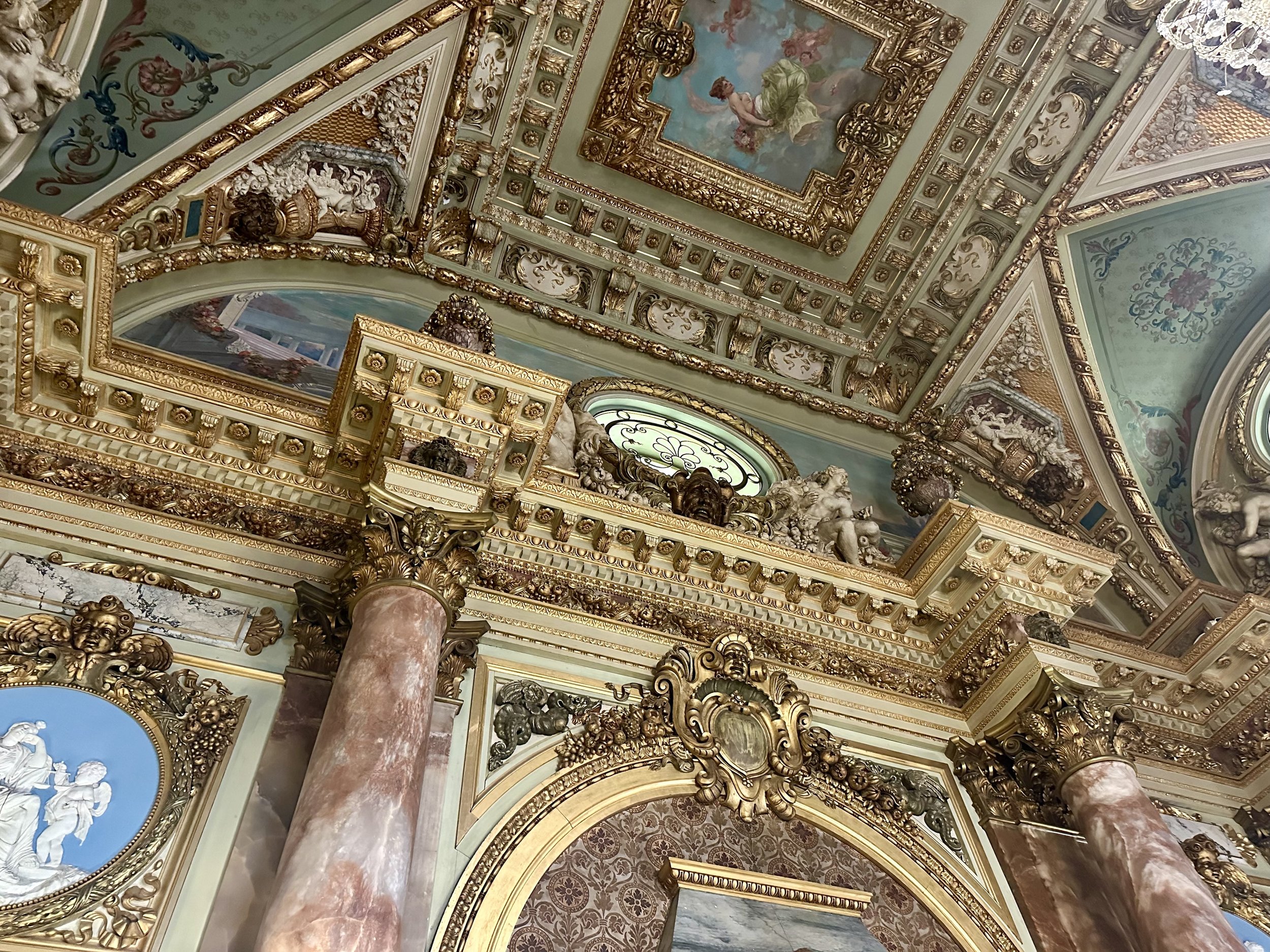
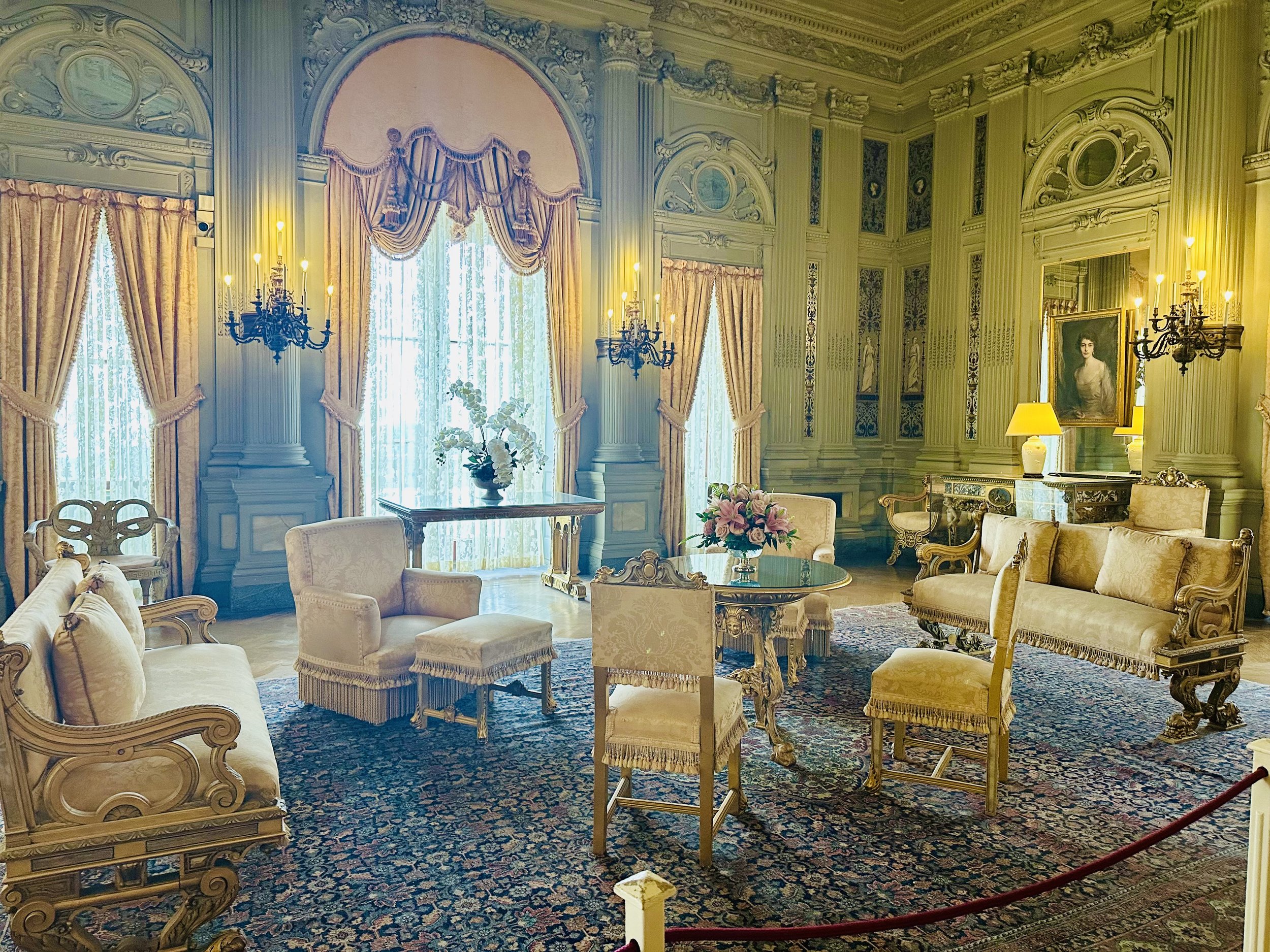
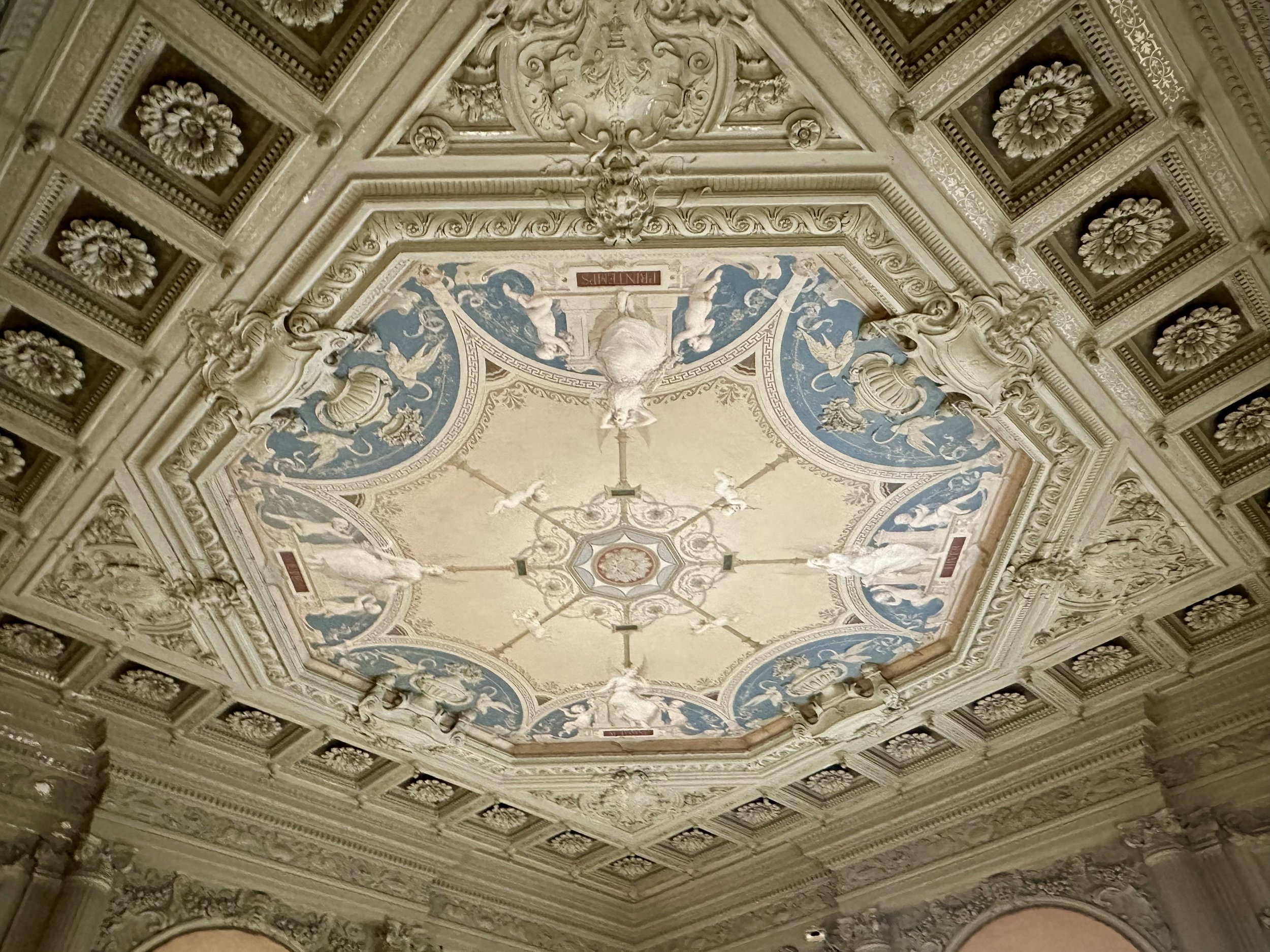
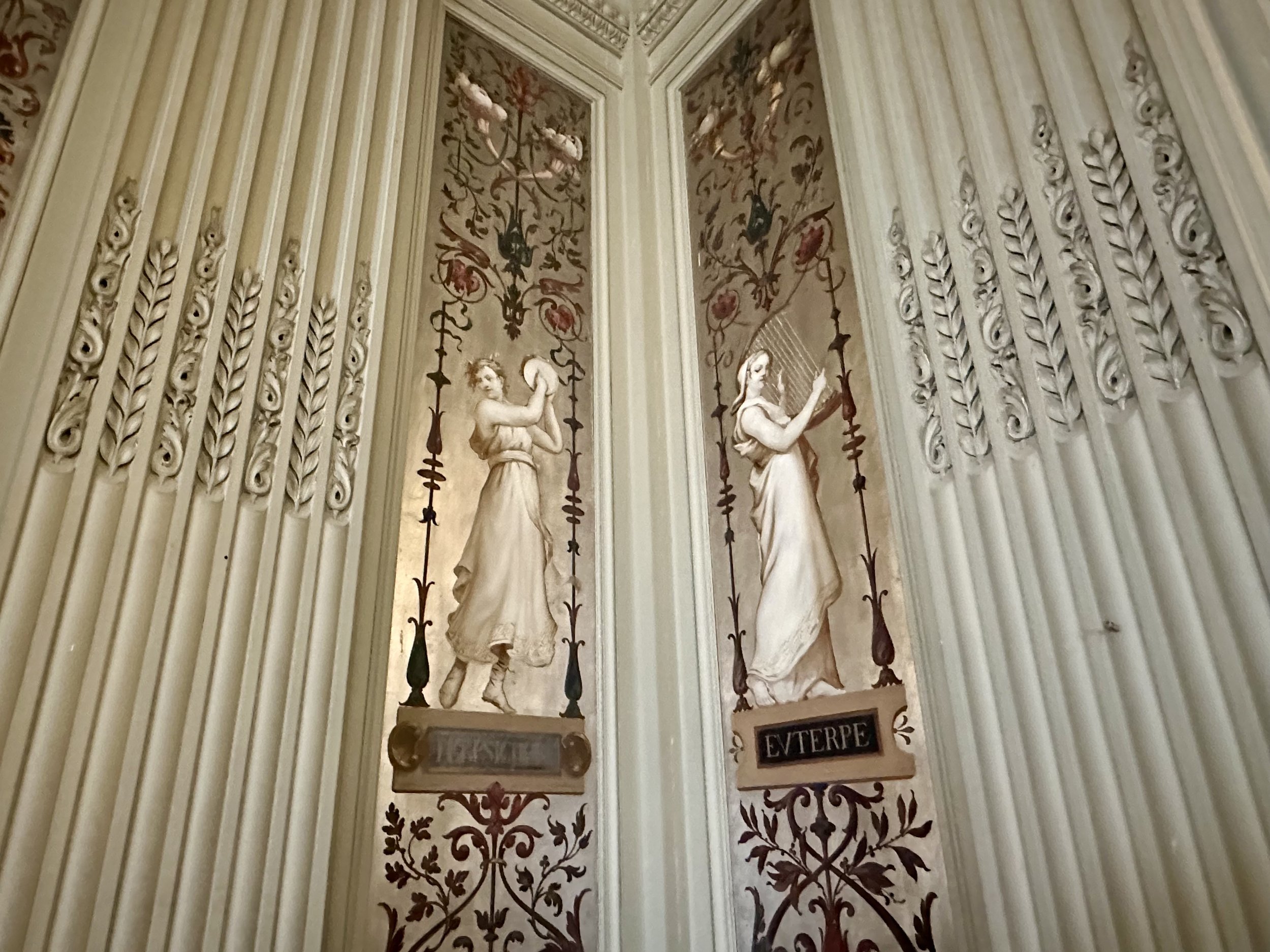
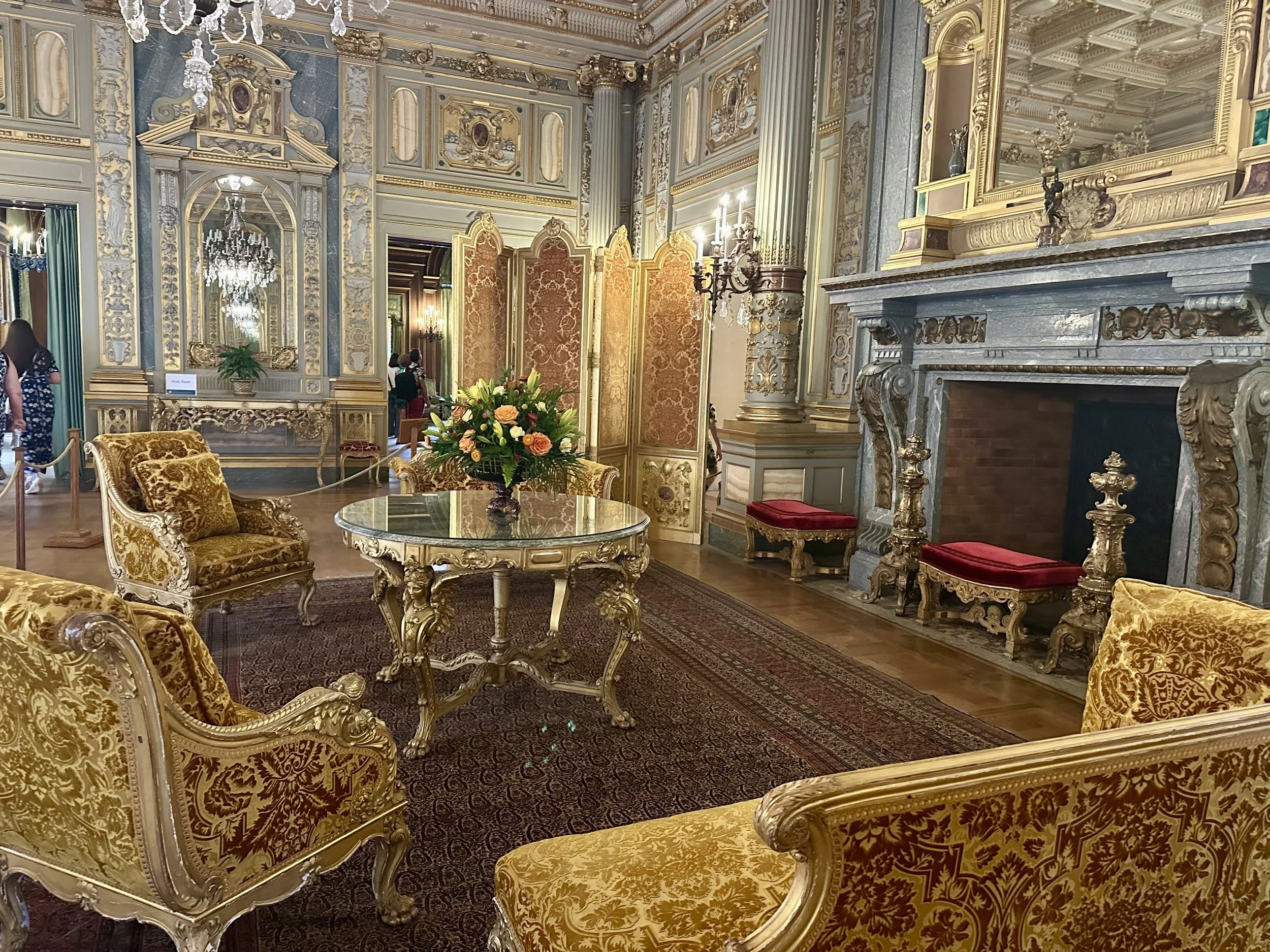
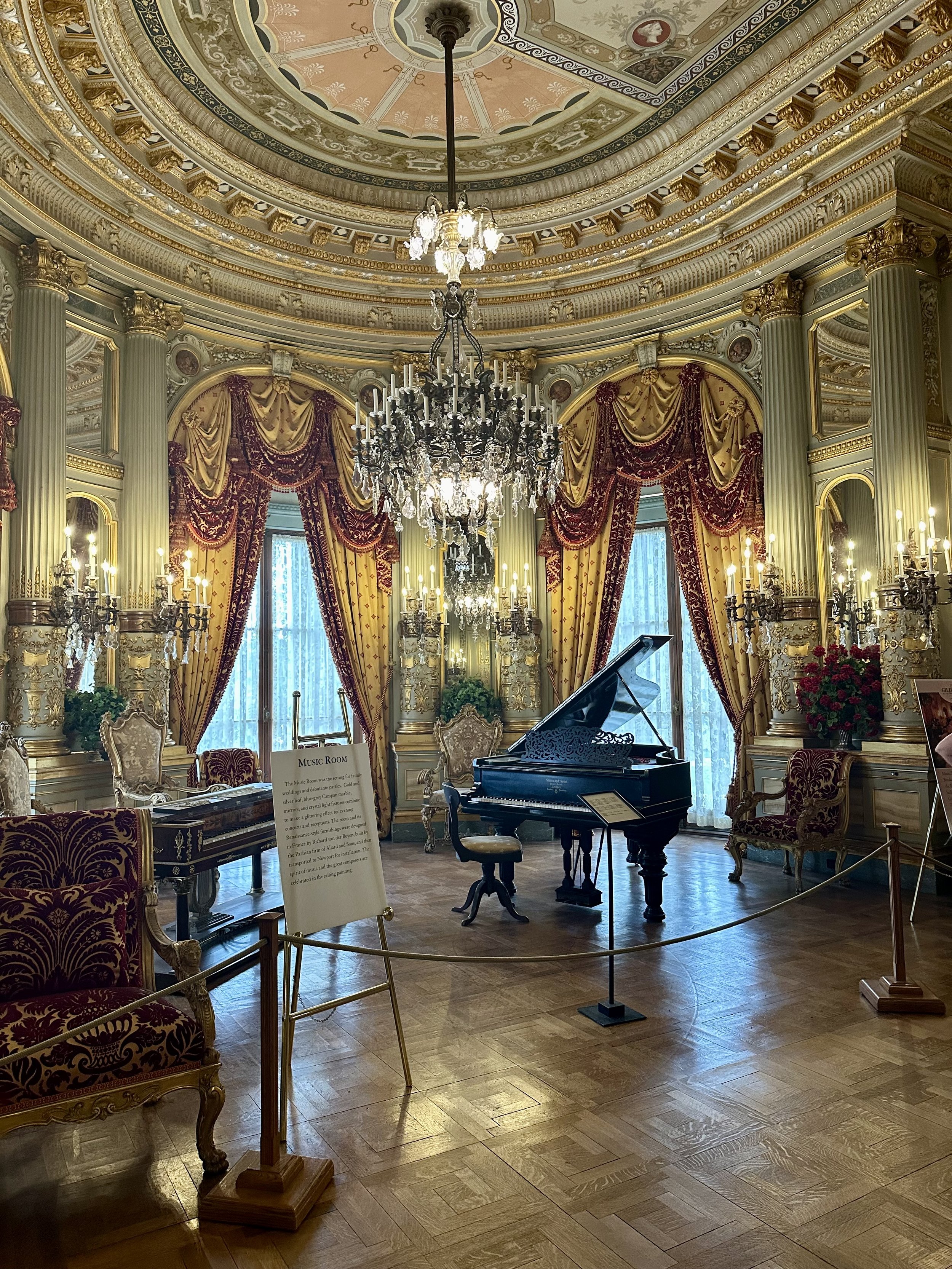
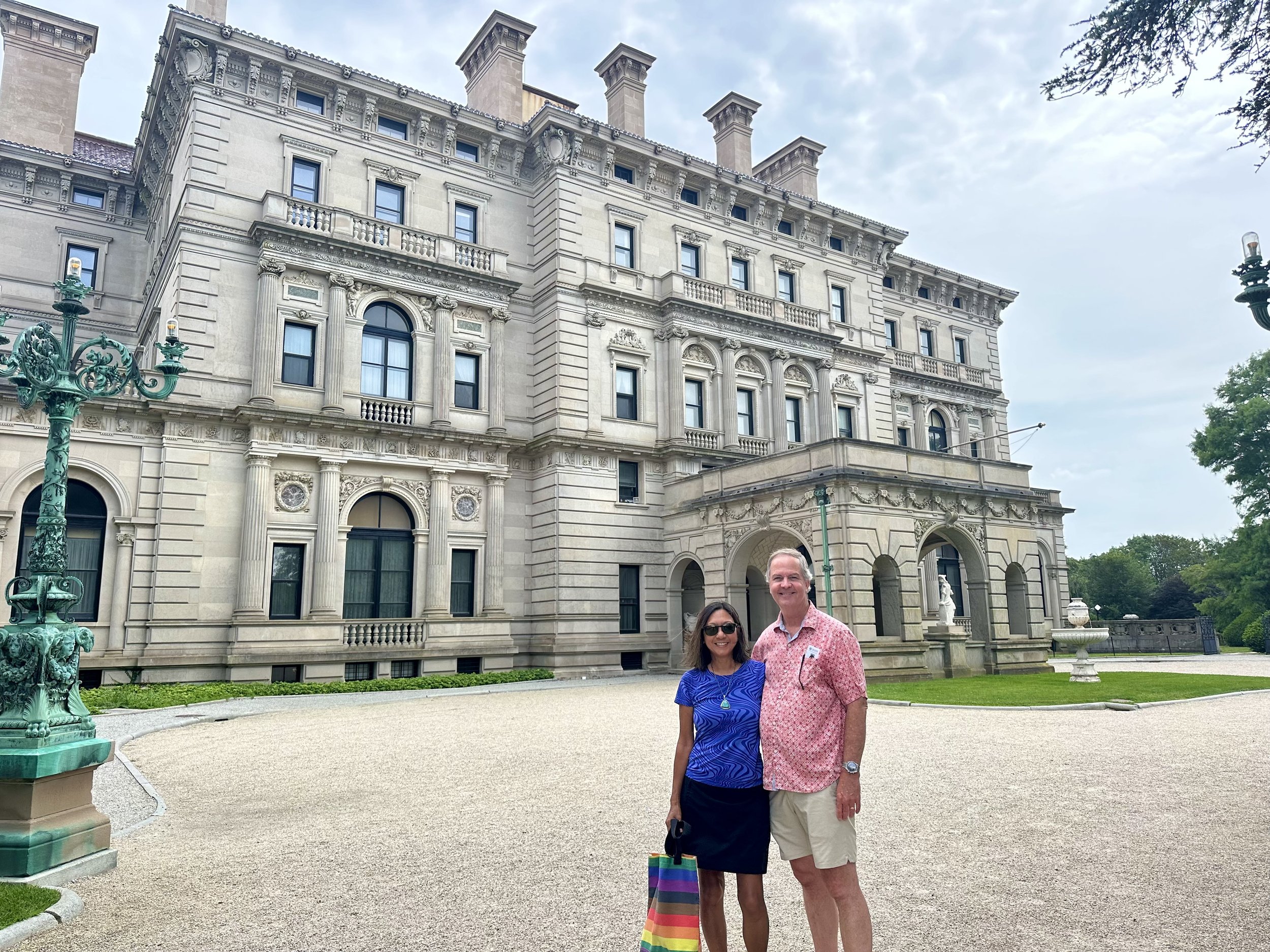
The Elms
One of the “newer” Newport Mansions, The Elms was built in 1901 by Mr. and Mrs. Edward Julius Berwind. Berwind was a coal magnate who supplied Vanderbilt’s railroads and co-founded the New York Subway. Designed by Horace Trumbauer, the Elms resembles a French chateau.
After his wife Sarah died, Edward’s sister Julia Berwind became his hostess. Julia inherited the house upon his death, and she continued to spend summers there alone - maintaining the full staff of 43 people! - until her death in 1961. As she had no spouse or children, a nephew inherited the house, and promptly sold it at public auction for less than $100,000. The following year, the house was scheduled for demolition. The Preservation Society of Newport County purchased it for just $112,000 and opened it to the public just two weeks later.
Like The Breakers, The Elms had a self-guided audio tour, and it definitely rivaled The Breakers in scale and grandeur. In the television show The Gilded Age, the kitchen in the Russells’ house is the Main Kitchen in The Elms, and Gladys Russell’s bedroom is Mrs. Berwind’s Bedroom in The Elms.
I also took a guided tour called “Servant Life at The Elms,” where I was able to see the staff quarters, the rooftop, and the many workrooms and passageways used by the staff “behind the scenes.” Edward Berwind was an engineer, and outfitted the house with the latest technology in electric power, refrigeration, and communications. The staff quarters were quite luxurious for their time. It was fascinating to learn how much work was involved in maintaining the house and serving its inhabitants. During the brief summer social season (just eight to ten weeks), the family was expected to host at least eight dinner parties and a ball for 400 guests!
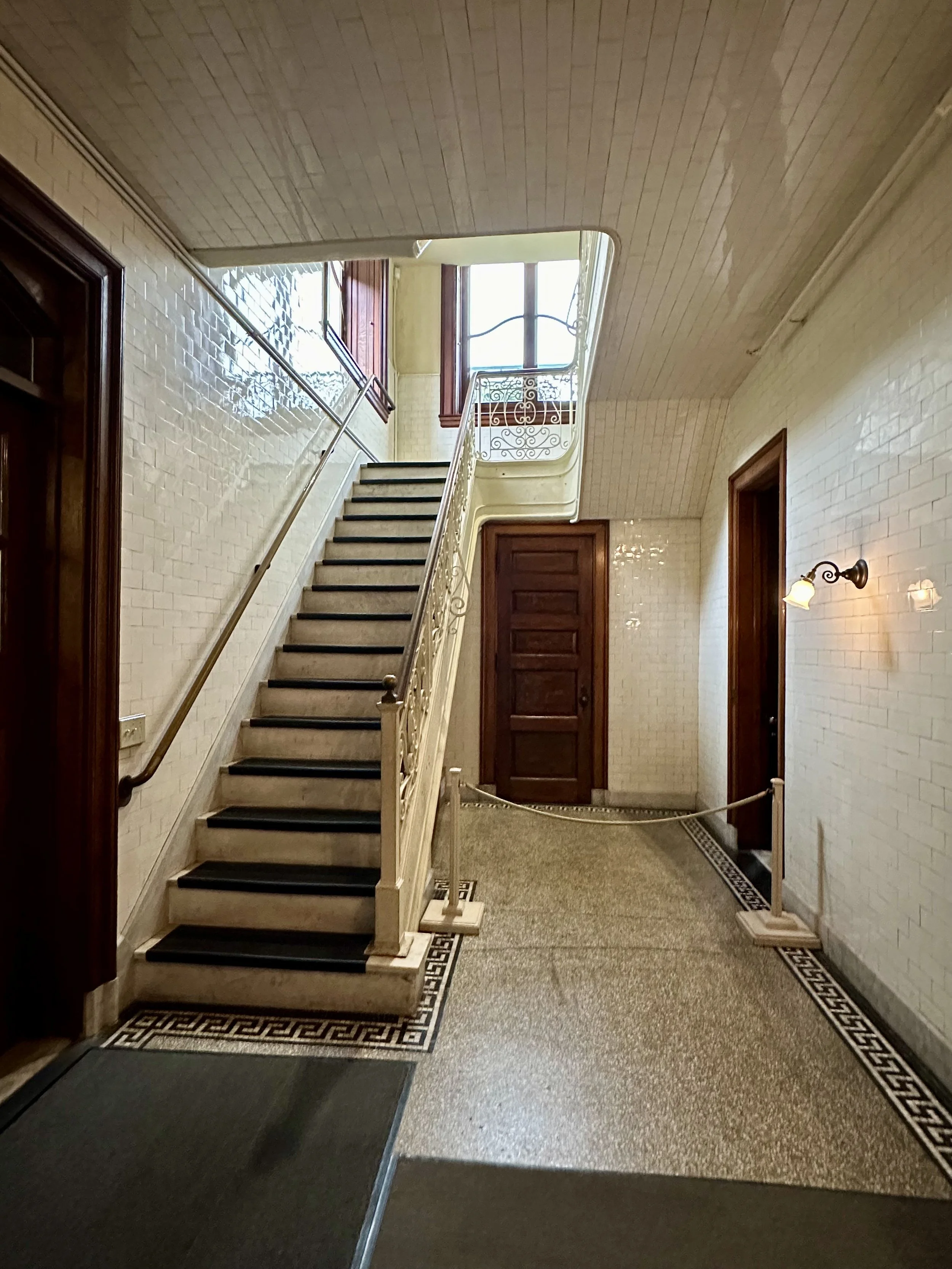
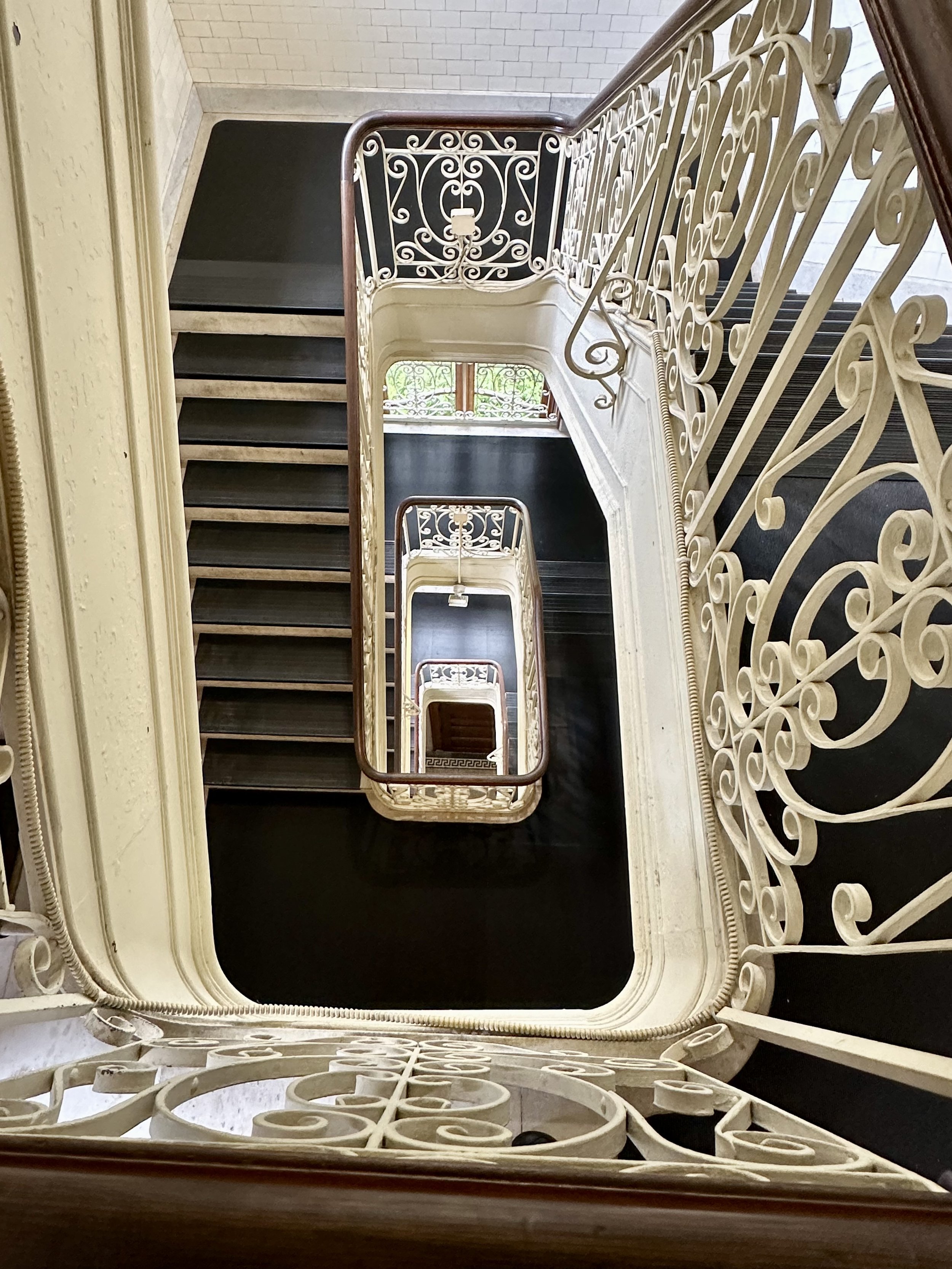
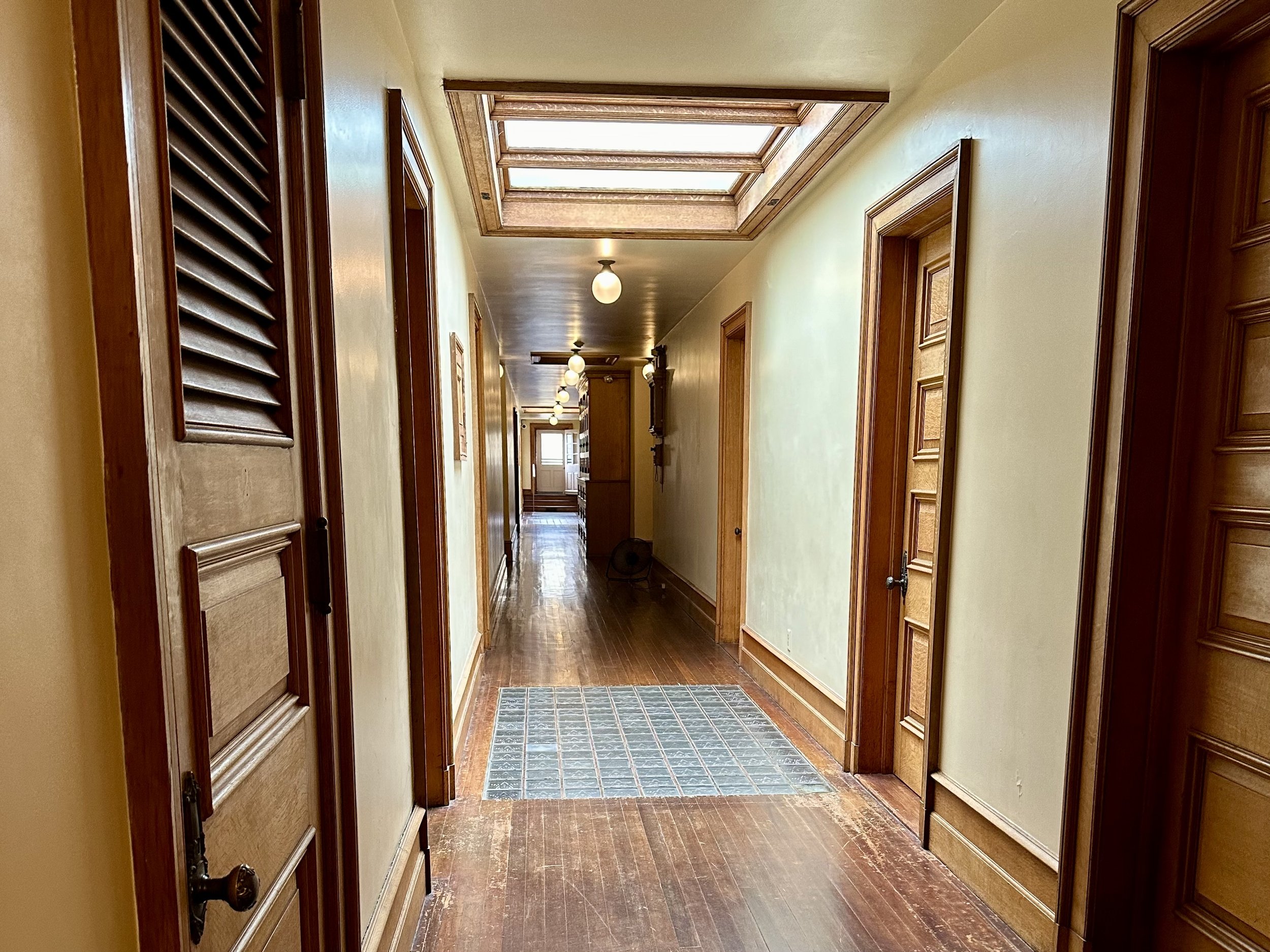
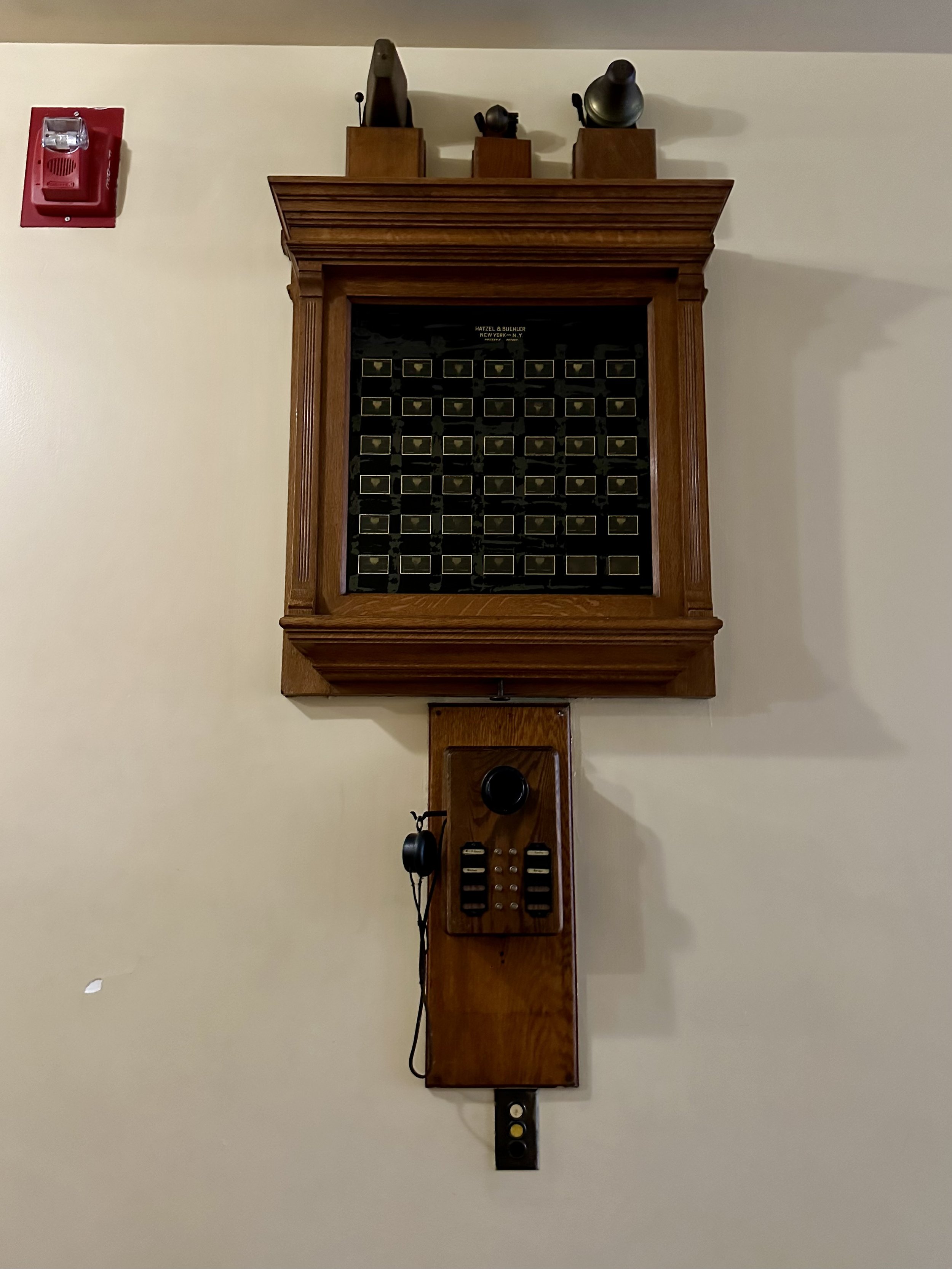
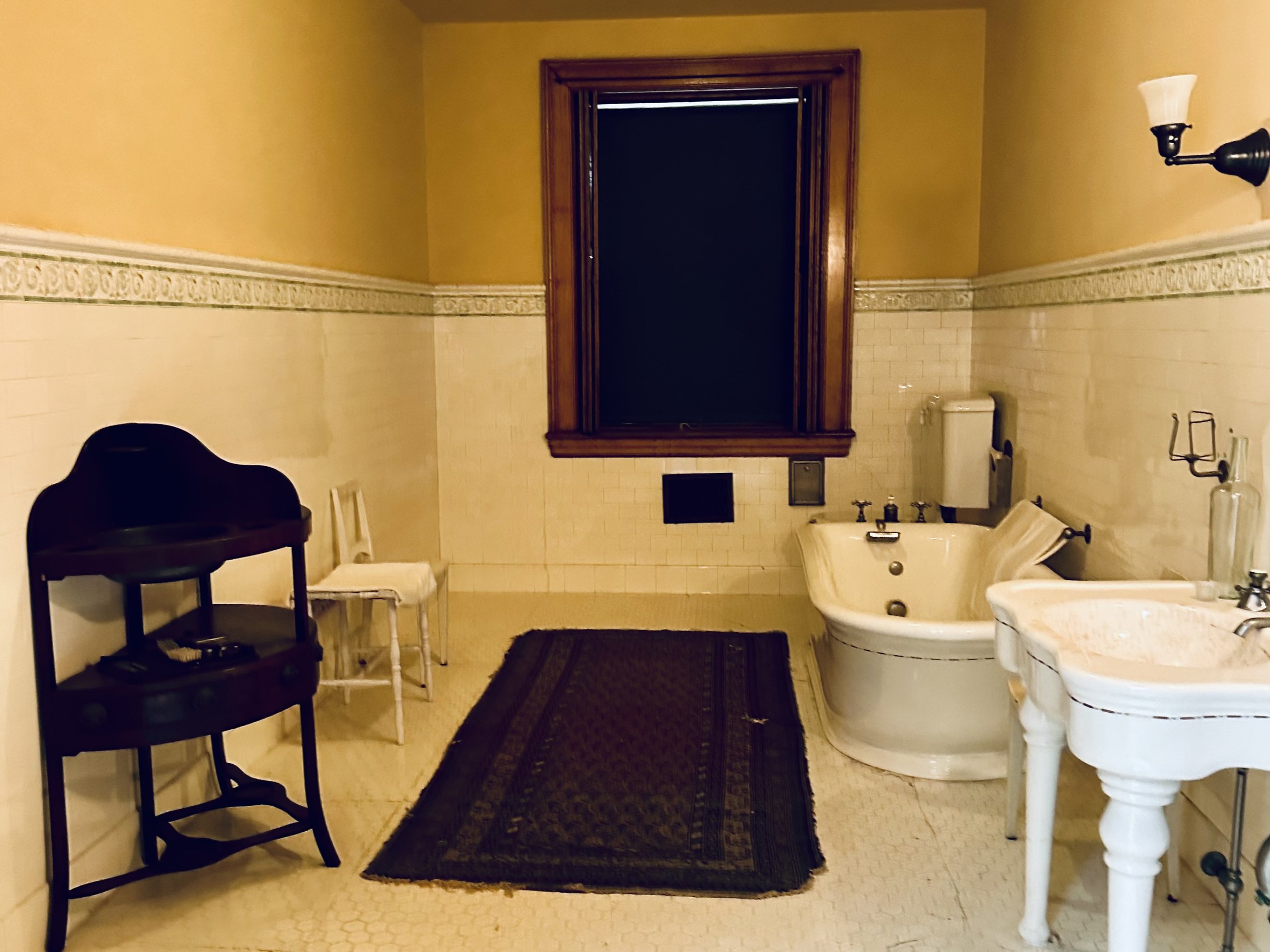
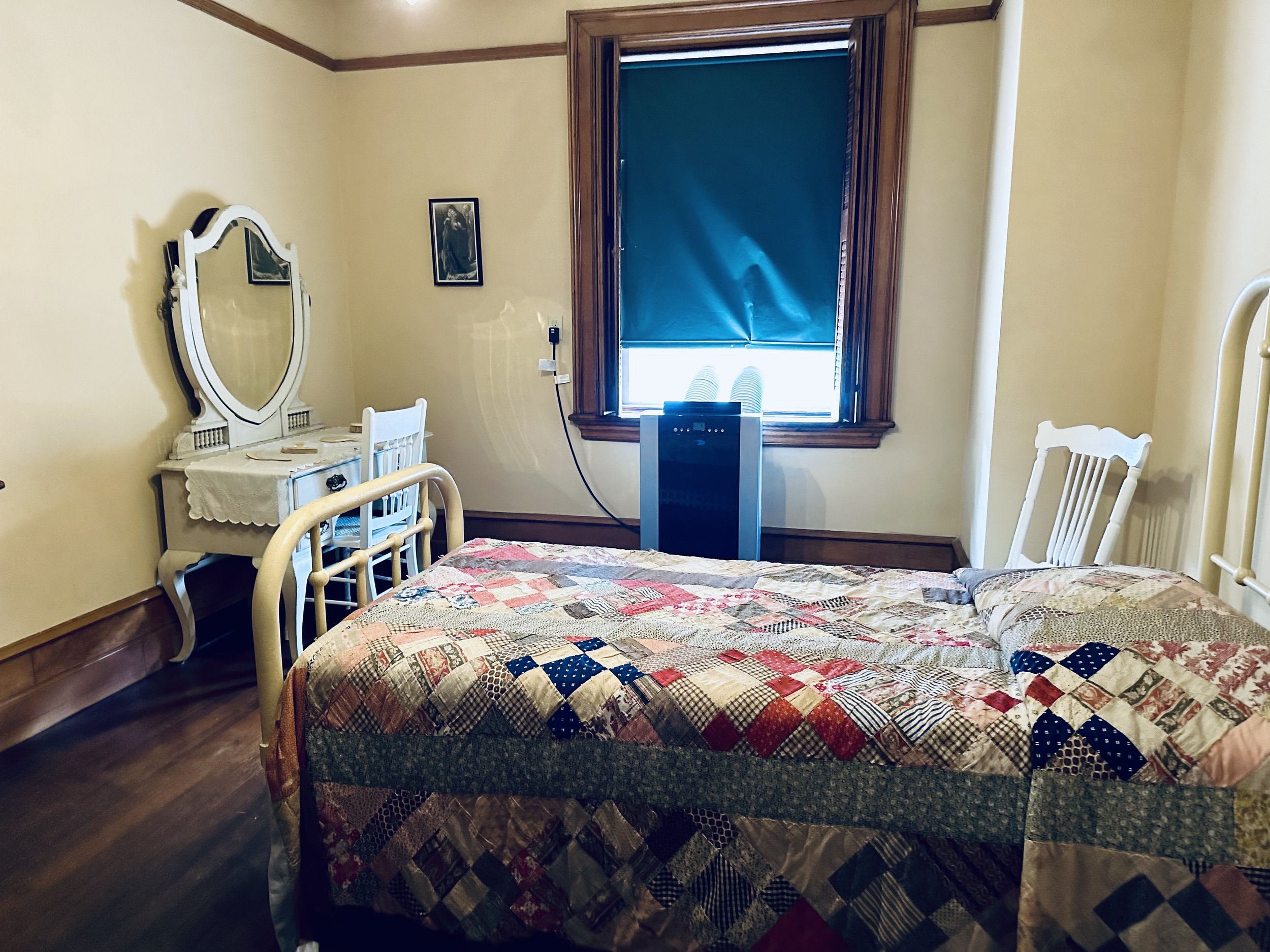
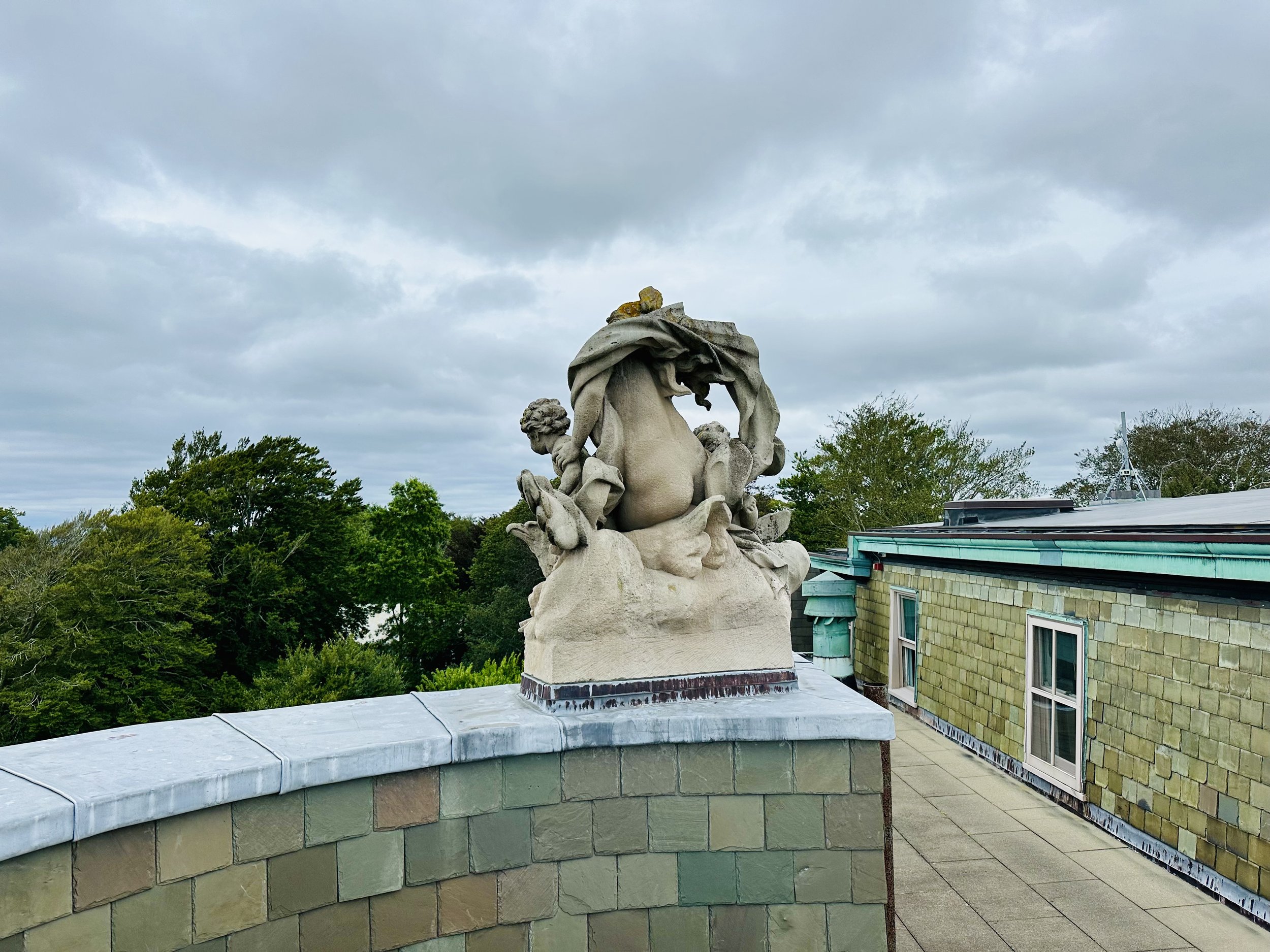
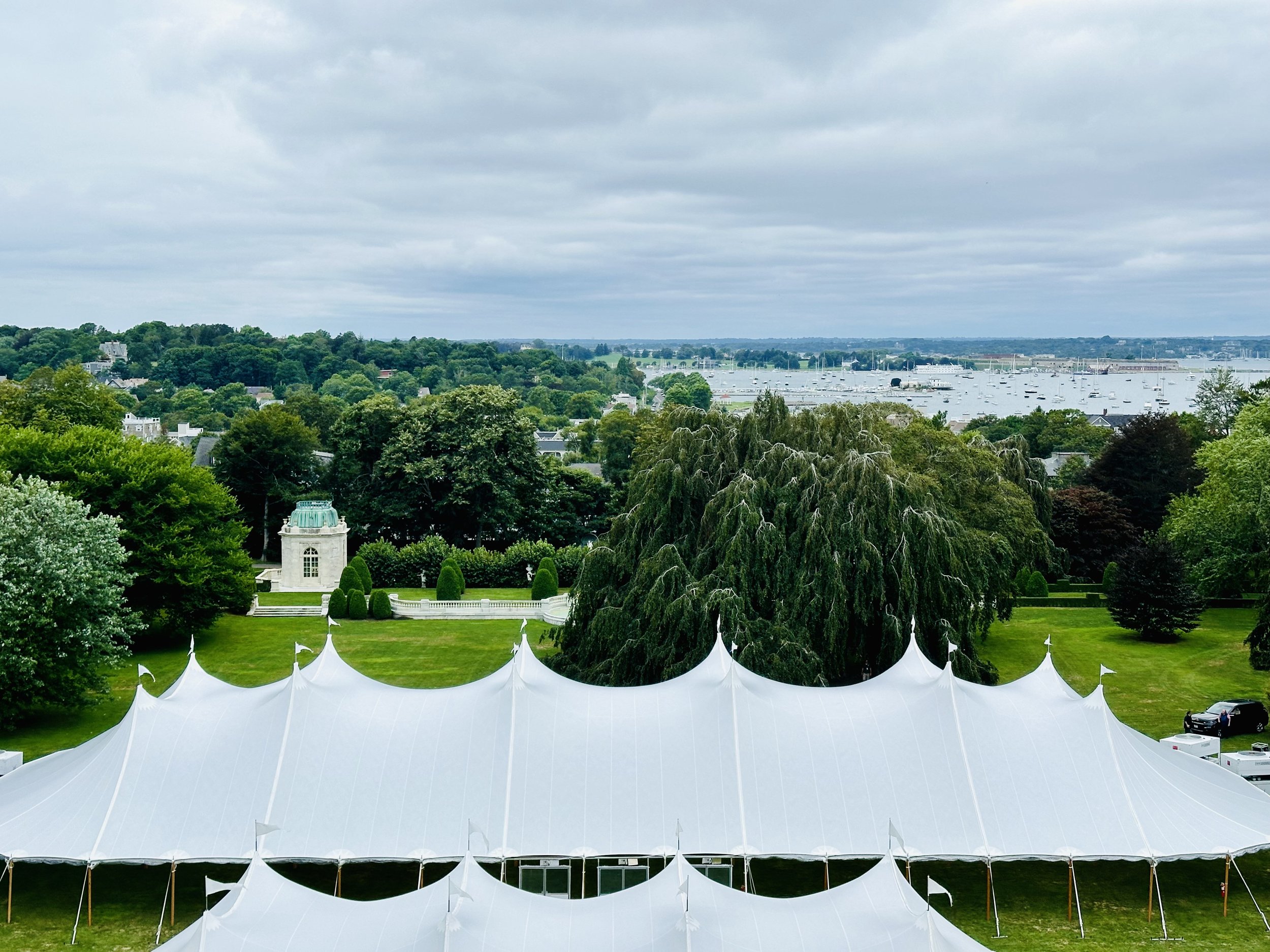

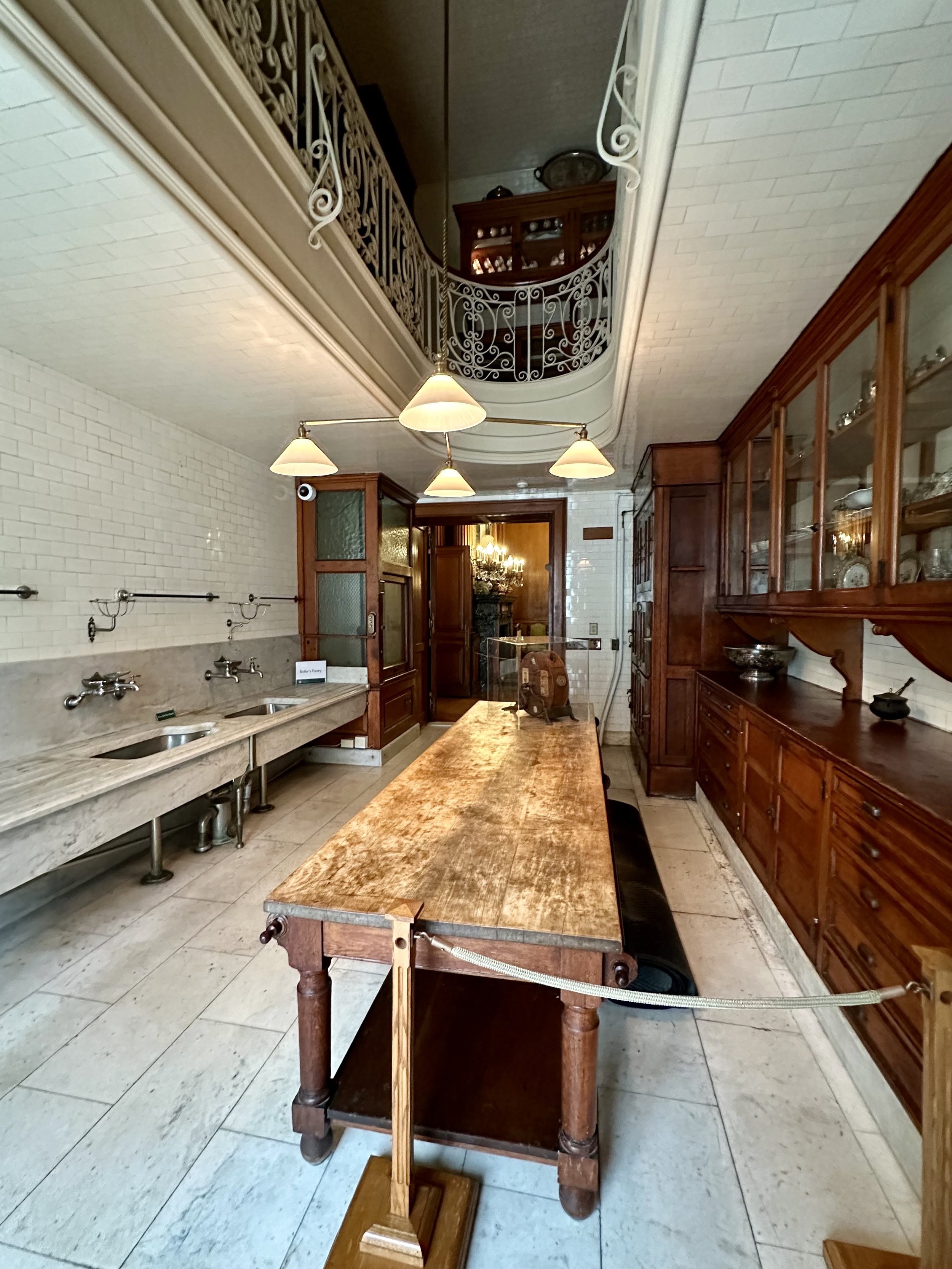
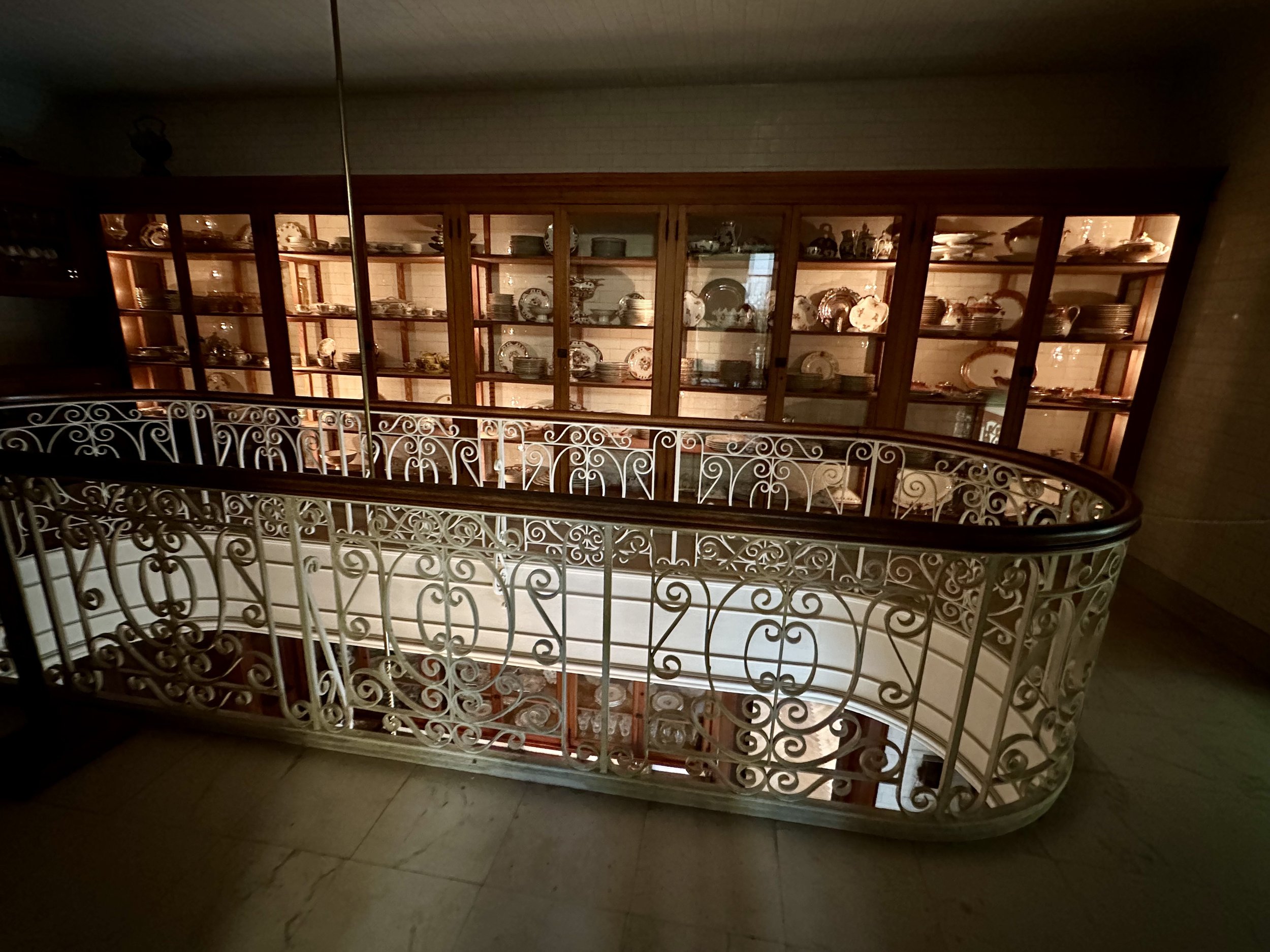
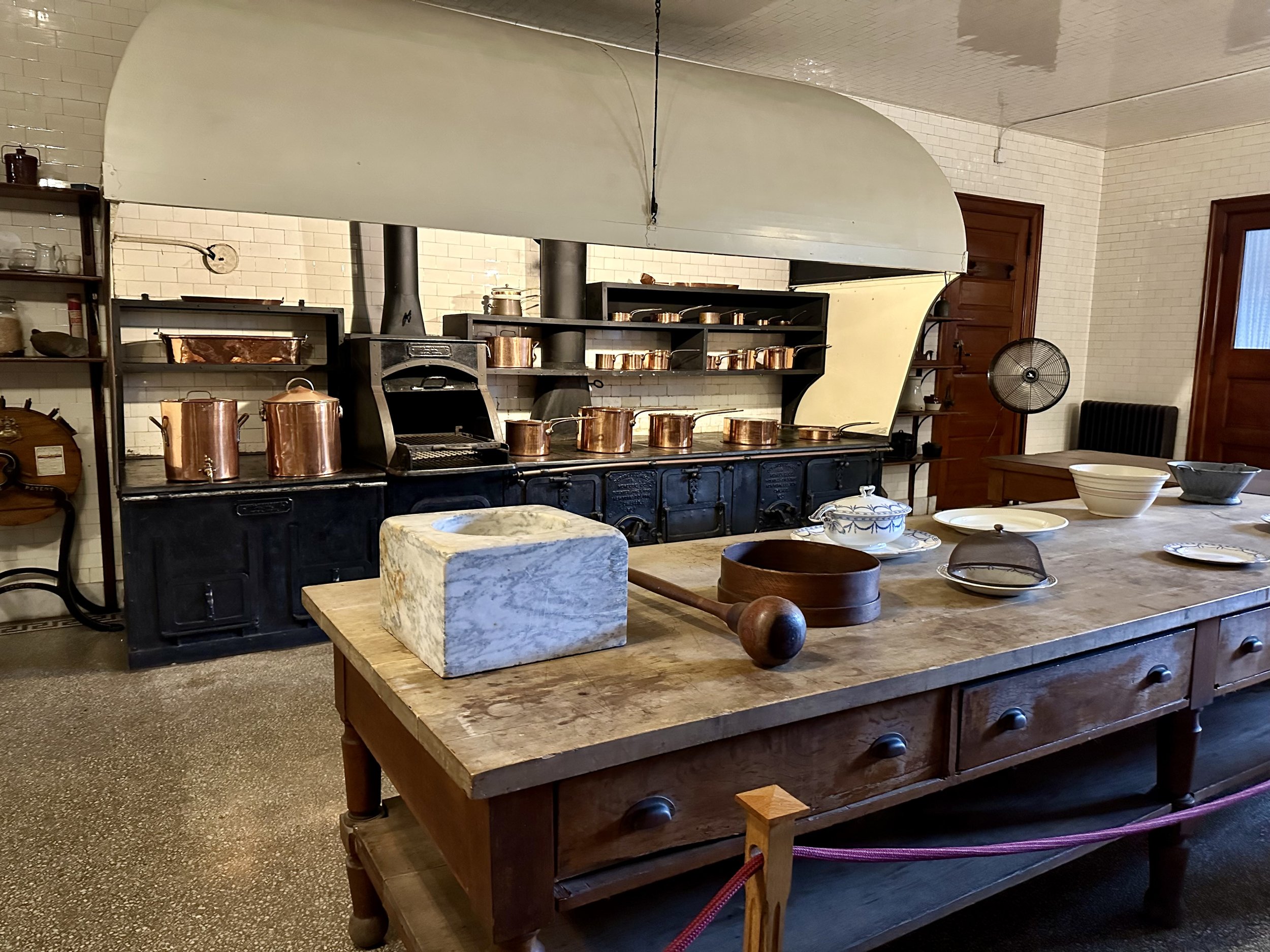

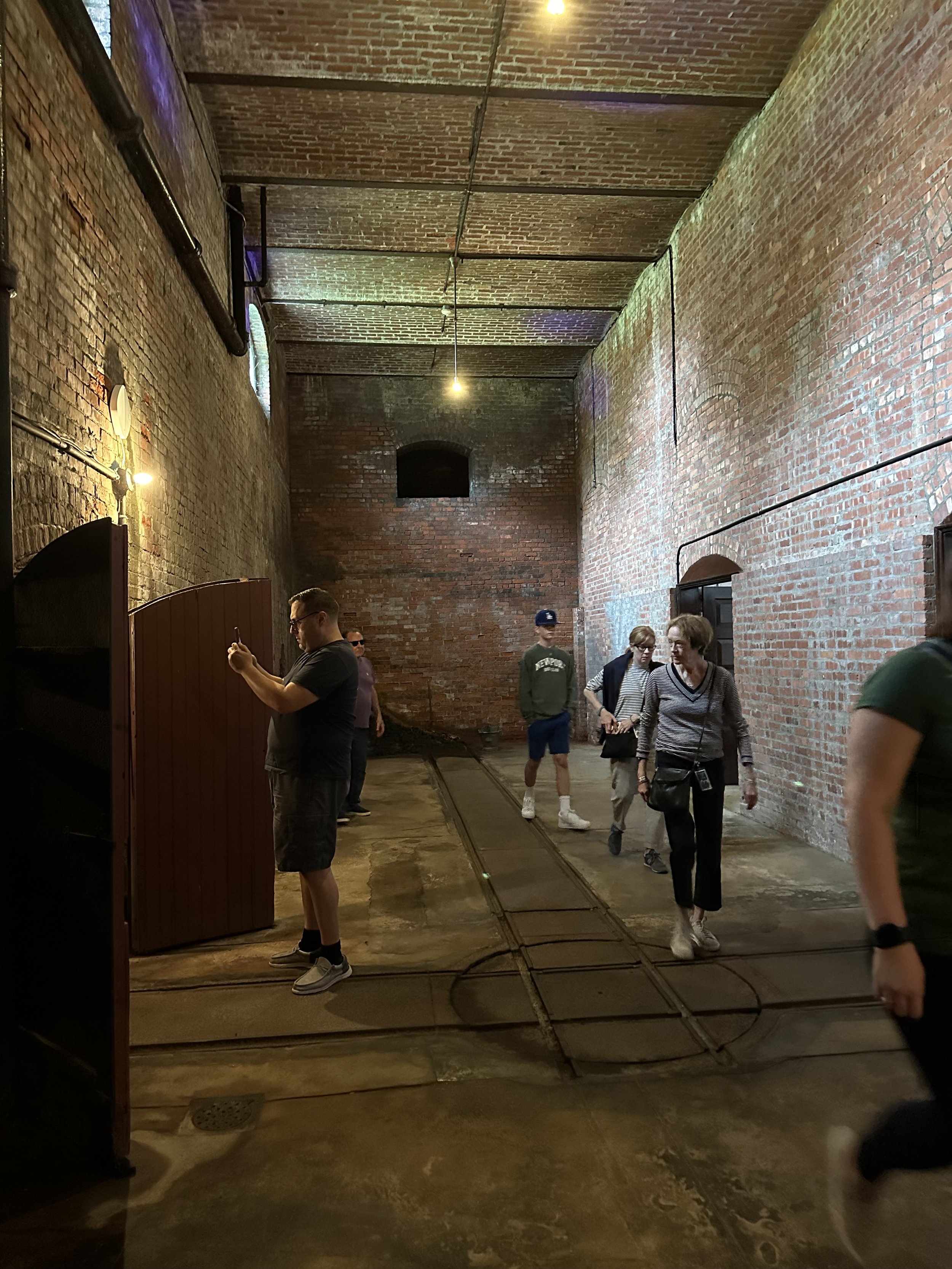
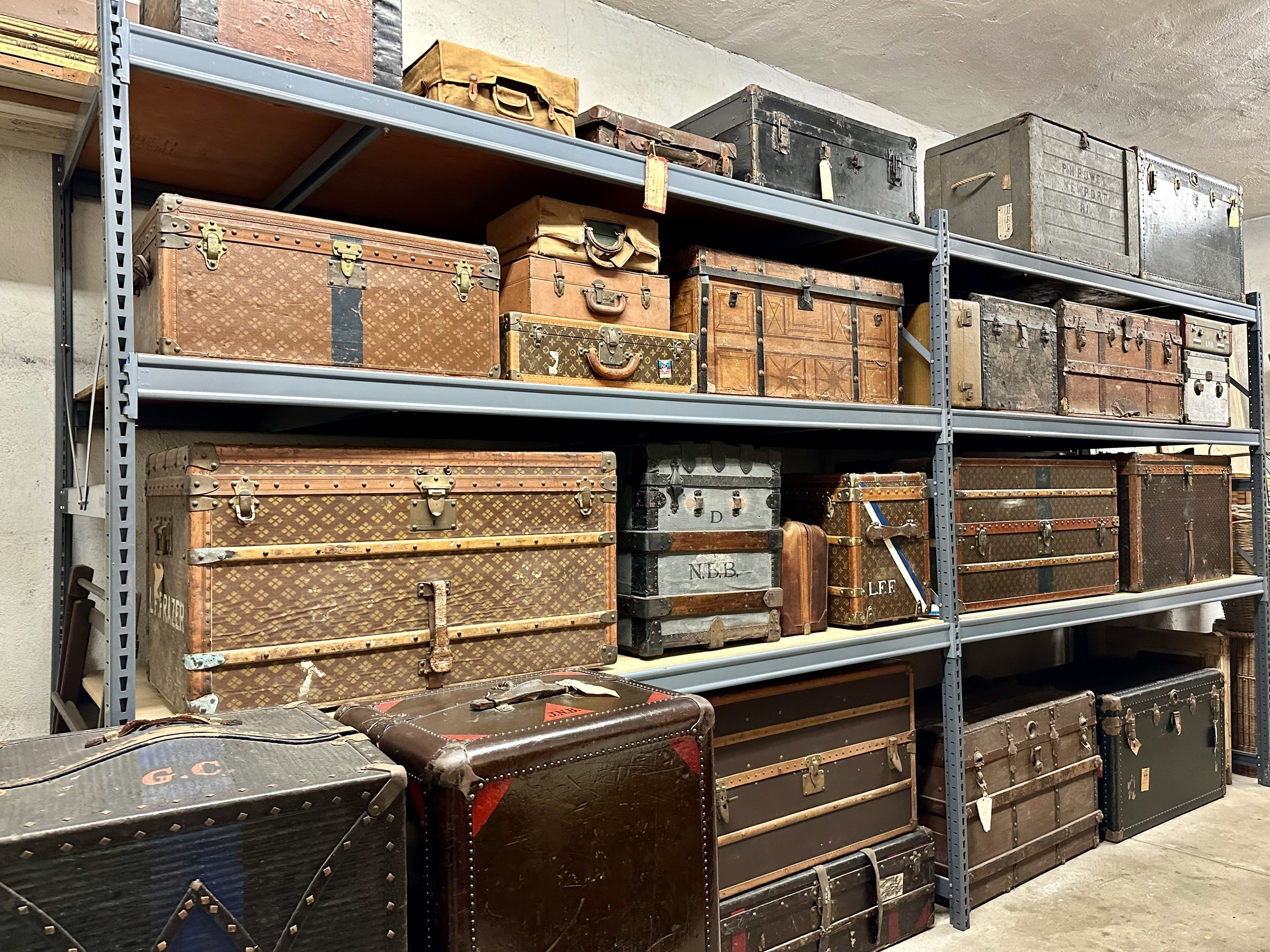
It was fun re-watching The Gilded Age and spotting rooms and details that we had seen on our tours of the Newport Mansions. And it was mind-boggling to think of the money and effort expended to build, furnish, decorate, and maintain “cottages” that were used for only two months each year.




